Home> Bearing Technology> 608 Bearing Handbook: Best Practices for Longevity and Efficiency
Introduction
In the realm of mechanical engineering, bearings play a pivotal role in the functionality and longevity of various systems. Among these, the 608 bearing stands out due to its unique design and versatile applications. Understanding the characteristics and applications of these bearings is essential for engineers and technicians alike, ensuring optimal performance in their respective machinery.
Overview of the Importance of Bearings in Mechanical Systems
Bearings serve as critical components that reduce friction between moving parts, enabling smoother operation in machinery. The 608 bearing, a type of deep groove ball bearing, is widely used in numerous applications due to its ability to support both radial and axial loads. This adaptability is crucial in mechanical systems, where minimizing wear and tear can significantly enhance the longevity of equipment.
Significance of Longevity and Efficiency in 608 Bearings
Longevity and efficiency are paramount when selecting bearings for specific applications. The 608 bearing is engineered to withstand high speeds and varying loads, making it an ideal choice for everything from electric motors to skateboards. The durability of these bearings directly correlates with reduced maintenance costs and improved operational efficiency, which is vital for industries that rely on continuous performance.
Purpose of the Handbook in Guiding Best Practices
This handbook serves as a comprehensive resource for engineers and technicians, providing valuable insights into the proper usage, selection, and maintenance of 608 bearings. By following the best practices outlined herein, professionals can ensure optimal performance and extend the service life of their bearings. Through detailed exploration of specifications, applications, and troubleshooting methods, this handbook aims to empower users with the knowledge necessary to make informed decisions regarding 608 bearings in their projects.
In summary, the 608 bearing is an essential component in many mechanical systems, and understanding its significance is critical for ensuring the reliability and efficiency of machinery. This handbook will guide you through the best practices and considerations necessary for effectively utilizing these bearings in various applications.
Understanding 608 Bearings
Definition and Basic Characteristics of 608 Bearings
The 608 bearing is a widely used deep groove ball bearing that is recognized for its robust design and reliable performance. Typically, these bearings have an inner diameter of 8 mm, an outer diameter of 22 mm, and a width of 7 mm, making them compact and suitable for a variety of applications. The 608 bearing is designed to handle both radial and axial loads, providing versatility in use. Its design features a single row of balls, which aids in reducing friction and enhancing efficiency during operation.
Types of 608 Bearings Available
There are several types of 608 bearings available in the market, each designed to meet specific operational needs:
|
Type of 608 Bearing |
Description |
Ideal Applications |
|
Open 608 Bearings |
No shields or seals, allowing easy access to lubrication. |
Minimal contaminants, regular maintenance. |
|
Sealed 608 Bearings |
Equipped with rubber seals on both sides for enhanced protection against dust. |
Harsh environments, ensuring longevity. |
|
Shielded 608 Bearings |
Features metal shields to prevent contaminants while allowing lubrication. |
Balance of protection and maintenance ease. |
窗体顶端
窗体底端
Applications Across Various Industries and Machinery
The 608 bearing finds its applications in a diverse range of industries due to its adaptability and reliability. Common uses include:
Electric Motors: These bearings are integral to the smooth operation of electric motors, where they support rotating shafts and minimize friction.
Robotics: In robotic applications, 608 bearings are essential for facilitating precise movements and load handling, contributing to the overall efficiency of robotic systems.
Bicycles and Skateboards: The lightweight nature of 608 bearings makes them a popular choice for bicycles and skateboards, providing smooth rolling and durability under constant use.
Automotive: In automotive applications, these bearings are utilized in various components such as wheels and steering systems, enhancing performance and safety.
Home Appliances: From washing machines to fans, 608 bearings are commonly used in household devices to ensure smooth operation and longevity.
In conclusion, understanding the characteristics, types, and applications of 608 bearings is crucial for engineers and technicians. By selecting the appropriate bearing type for specific applications, professionals can ensure optimal performance and longevity in their machinery and equipment.
Factors Affecting Longevity
Environmental Factors Impacting Bearing Lifespan
The longevity of a 608 bearing is significantly influenced by environmental conditions. Factors such as temperature, humidity, and contaminants can all affect bearing performance. High temperatures can lead to increased wear and reduce the effectiveness of lubricants, while excessive humidity can introduce moisture that may corrode bearing surfaces. Additionally, the presence of dust or debris can compromise the integrity of the bearing, especially if it is an open type. To ensure the maximum lifespan of a 608 bearing, it is crucial to assess the operating environment and take necessary precautions.
Proper Storage Conditions and Handling Procedures
How 608 bearings are stored and handled before installation plays a crucial role in their overall longevity. Bearings should be kept in a clean, dry environment to prevent contamination. Ideal storage conditions include maintaining a stable temperature and humidity level. Furthermore, handling procedures must be followed to avoid physical damage. Bearings should be handled with care, using appropriate tools and methods to prevent scratches or dents, which can lead to premature failure.
Impact of Load, Speed, and Lubrication on Bearing Life
The operational parameters of a 608 bearing—specifically load, speed, and lubrication—are critical factors that influence its lifespan.
|
Factor |
Description |
|
Load |
Each 608 bearing has a rated load capacity. Exceeding this limit can lead to early fatigue and failure. Select a bearing suitable for the expected load. |
|
Speed |
Operating speed impacts longevity. Bearings have optimal speed ranges; exceeding these can generate heat and reduce lubrication effectiveness, leading to failure. |
|
Lubrication |
Proper lubrication minimizes friction and wear. Use the correct lubricant and maintain intervals to extend lifespan. Select lubricant based on the operating environment. |
Conclusion
Understanding the factors affecting the longevity of 608 bearings is essential for engineers and technicians. By considering environmental conditions, storage practices, and operational parameters, professionals can significantly enhance the lifespan and performance of these critical components. Implementing best practices in these areas not only ensures reliability but also reduces the total cost of ownership by minimizing maintenance and replacement needs.
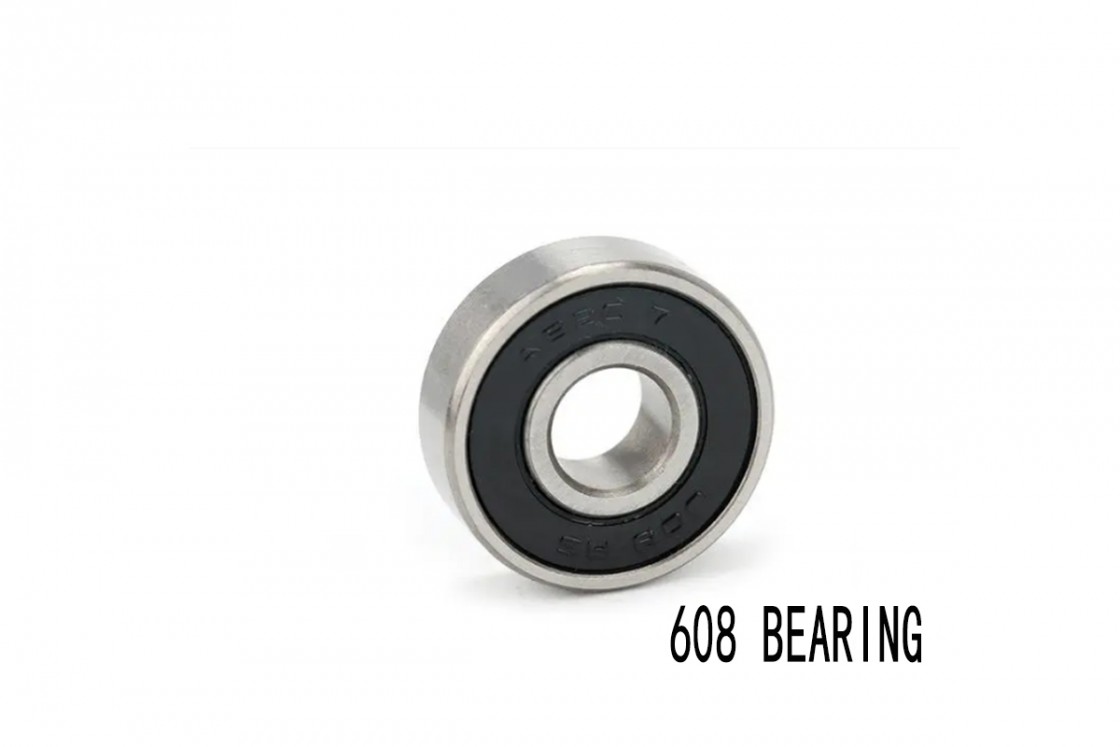
Best Practices for Installation
When it comes to ensuring optimal performance and longevity of the 608 bearing, proper installation is crucial. This section will provide a step-by-step guide to installing these bearings, highlight the necessary tools and equipment, and outline common mistakes to avoid during the installation process.
Step-by-Step Guide to Proper Bearing Installation
|
Step |
Description |
|
Preparation of the Installation Site |
Ensure the work area is clean and free from debris to prevent contaminants from entering the 608 bearing. |
|
Inspect the Components |
Check the 608 bearing and related components for damage or wear. Confirm compatibility and freedom from defects. |
|
Select the Right Tools |
Use tools specifically designed for handling bearings to ensure a successful installation. |
|
Align the Components |
Ensure proper alignment of the shaft and housing to prevent undue stress on the 608 bearing. |
|
Apply Lubrication |
Apply the appropriate lubricant to the bearing before installation to reduce friction and ensure smooth operation. |
|
Install the Bearing |
Use a bearing press to carefully install the 608 bearing. Avoid using hammers or excessive force. |
|
Final Checks |
Perform a thorough inspection after installation to ensure proper seating and alignment. Spin the bearing manually to check for irregularities. |
Tools and Equipment Required for Installation
To ensure a smooth installation process for the 608 bearing, you will need the following tools and equipment:
Bearing Press: Essential for applying even pressure during installation, minimizing the risk of damage.
Calipers: Used for measuring the shaft and housing dimensions to ensure proper fit.
Lubricants: Selecting the right type of lubricant is crucial for the performance of the 608 bearing.
Cleaning Supplies: Degreasers and lint-free cloths for cleaning the components before installation.
Torque Wrench: For ensuring that any fasteners are tightened to the manufacturer’s specifications.
Common Installation Mistakes to Avoid
Even experienced technicians can make mistakes during installation. Here are some common pitfalls to watch out for when installing 608 bearings:
Improper Alignment: Failing to align the bearing properly can lead to increased wear and potential failure. Always double-check alignment before proceeding.
Insufficient Lubrication: Skipping lubrication or using the wrong type can result in higher friction and heat generation. Always apply the correct lubricant.
Excessive Force: Using too much force during installation can damage the bearing. Always use a bearing press rather than hammers or mallets.
Ignoring Environmental Conditions: Not considering the installation environment can lead to contamination of the bearing. Ensure a clean and controlled environment during installation.
By following these best practices, engineers and technicians can ensure that 608 bearings are installed correctly, ultimately extending their service life and improving performance in various applications.
Maintenance Techniques
Regular maintenance of 608 bearings is essential to ensure their optimal performance and longevity. This section discusses the importance of regular bearing maintenance, outlines inspection intervals and methods for detecting wear, and provides lubrication schedules and methods tailored for 608 bearings.
Importance of Regular Bearing Maintenance
Regular maintenance of 608 bearings plays a critical role in enhancing the reliability and lifespan of machinery. Bearings are often subjected to high loads and speeds, leading to wear and potential failure if not properly maintained. Routine maintenance helps identify issues early, allowing for timely interventions that can prevent costly downtimes and equipment failures. By ensuring that bearings are in good condition, businesses can significantly reduce operational costs and improve overall efficiency.
Inspection Intervals and Methods for Detecting Wear
Establishing appropriate inspection intervals is vital for the maintenance of 608 bearings. Generally, inspections should be conducted at predetermined intervals based on operational conditions, such as load, speed, and environmental factors. Common methods for detecting wear include:
Visual Inspection: Regular visual checks can help identify signs of wear or damage, such as discoloration, pitting, or surface irregularities on the 608 bearing.
Vibration Analysis: Monitoring vibration patterns can provide insight into the condition of the bearing. Unusual vibrations may indicate misalignment or wear.
Temperature Monitoring: Keeping track of the operating temperature of the 608 bearing can reveal potential lubrication issues or overloading.
Oil Analysis: For lubricated bearings, oil analysis can detect contaminants and wear particles, providing a clear picture of bearing health.
By implementing these inspection methods, technicians can proactively manage the condition of 608 bearings and avoid unexpected failures.
Lubrication Schedules and Methods for 608 Bearings
Proper lubrication is critical to the performance and longevity of 608 bearings. Establishing a lubrication schedule is essential to ensure that bearings operate efficiently. Recommended practices include:
Lubrication Frequency: Bearings should be lubricated based on their operating conditions. Typically, a routine lubrication schedule might range from every few weeks to several months, depending on factors such as load and environmental exposure.
Lubricant Selection: Choosing the right lubricant is crucial. The lubricant must be compatible with the operating environment and should provide adequate protection against wear, corrosion, and contamination.
Application Methods: Various methods can be employed to apply lubricant to 608 bearings:
Grease Fittings: Using a grease gun to apply grease through dedicated fittings ensures uniform distribution.
Oil Bath: For applications requiring continuous lubrication, an oil bath may be beneficial.
Manual Application: In some cases, manual application with a brush or cloth may be sufficient for smaller or less frequently used bearings.
Monitoring Lubrication Effectiveness: Regularly assess the effectiveness of lubrication by checking for changes in noise levels, temperature, and vibration. Adjust the lubrication schedule as necessary based on these observations.
By adhering to proper maintenance techniques, engineers and technicians can ensure the reliable operation of 608 bearings, extending their service life and enhancing overall equipment performance. This proactive approach to maintenance not only prevents unexpected failures but also promotes a safer and more efficient working environment.
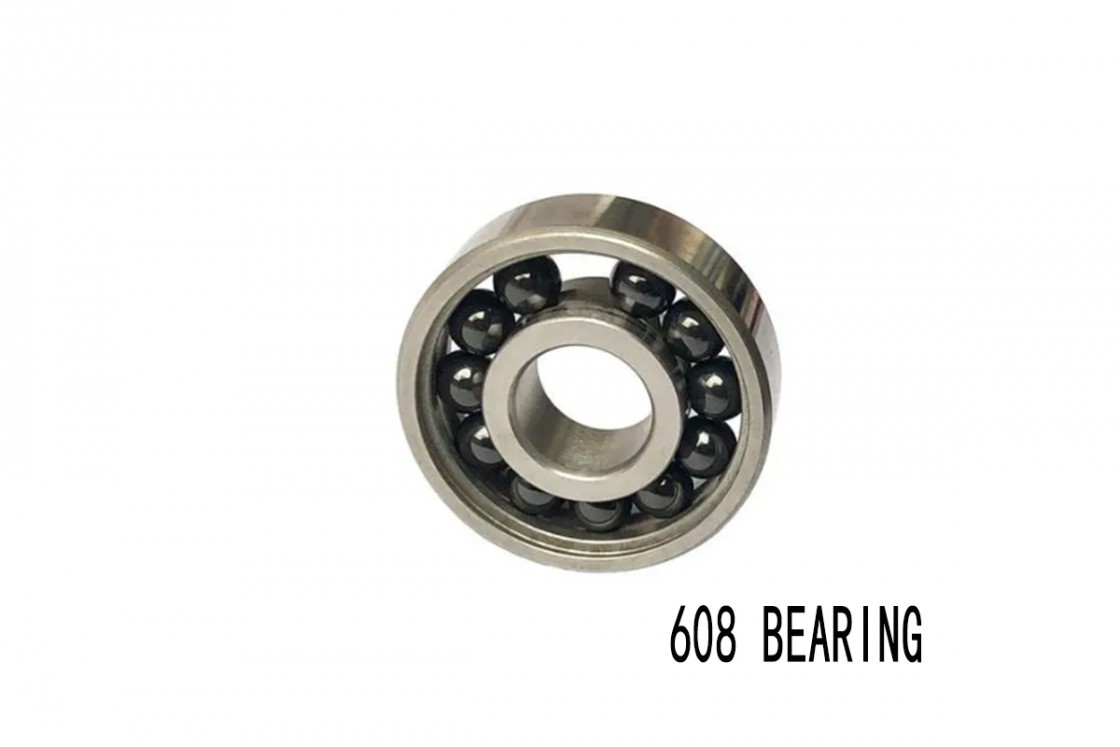
Troubleshooting and Diagnostics
When working with 608 bearings, understanding how to effectively troubleshoot and diagnose issues is crucial for maintaining optimal performance. This section will cover common problems affecting 608 bearings, techniques for diagnosing these issues, and recommended solutions and corrective actions to ensure efficient operation.
Common Issues Affecting 608 Bearings
608 bearings can encounter various issues that may affect their functionality. Some of the most prevalent problems include:
Noise: Unusual noises from 608 bearings can indicate underlying issues such as misalignment, insufficient lubrication, or contamination. These sounds often serve as early warning signs of potential failure.
Vibration: Excessive vibration in 608 bearings can lead to premature wear and indicate issues such as imbalance, improper installation, or internal damage. Monitoring vibration levels is critical for early detection of problems.
Overheating: If a 608 bearing operates at higher than normal temperatures, it can result from inadequate lubrication or excessive load. Overheating can cause significant damage and lead to catastrophic failure if not addressed promptly.
Wear and Tear: Regular wear is inevitable, but accelerated wear due to improper installation or misalignment can lead to the need for premature replacement of the bearing.
Techniques for Diagnosing Bearing Problems
To maintain the performance of 608 bearings, it is essential to diagnose issues effectively. Here are some key techniques for identifying bearing problems:
|
Diagnostic Technique |
Description |
|
Visual Inspection |
Regular inspections reveal signs of wear, such as discoloration or surface damage on the 608 bearing. Look for debris or contamination. |
|
Vibration Analysis |
Utilizing vibration analysis tools helps identify irregular patterns indicating misalignment, imbalance, or deterioration of the bearing, aiding proactive maintenance. |
|
Thermal Imaging |
Employing thermal imaging identifies hotspots that indicate overheating, valuable for detecting lubrication failures or excessive friction in the 608 bearing. |
|
Sound Analysis |
Using acoustic sensors assesses noise levels; a significant increase in noise may indicate internal issues such as wear or misalignment. |
Solutions and Corrective Actions for Efficient Operation
Once problems have been diagnosed, implementing effective solutions is key to ensuring the efficient operation of 608 bearings. Here are some recommended corrective actions:
Realignment: If misalignment is detected, it is essential to realign the components to reduce stress on the 608 bearing. Proper alignment can significantly extend bearing life.
Lubrication Adjustment: If inadequate lubrication is identified, adjust the lubrication schedule or method. Ensure that the lubricant used is appropriate for the application and operating environment of the 608 bearing.
Replacement of Damaged Components: In cases where wear is significant, it may be necessary to replace the 608 bearing or related components. Regular monitoring can help determine the optimal time for replacement.
Cleaning and Maintenance: Regularly clean the bearing and surrounding area to prevent contamination. Implement a robust maintenance schedule that includes routine inspections and servicing.
Load Management: Ensure that the loads applied to the 608 bearing are within specified limits. If necessary, redesign the application to accommodate the bearing's load capacity.
By understanding common issues, employing effective diagnostic techniques, and implementing corrective actions, engineers and technicians can maintain the integrity and efficiency of 608 bearings. This proactive approach not only extends the lifespan of the bearings but also enhances the overall performance of the machinery in which they are utilized.
Enhancing Efficiency
To maximize the performance of 608 bearings, it is essential to implement effective strategies that enhance efficiency. This section outlines key approaches to improve bearing performance, emphasizes the importance of proper alignment and clearance adjustments, and discusses the role of advanced technologies in optimizing the function of 608 bearings.
Strategies for Improving Bearing Performance and Efficiency
Improving the performance of 608 bearings is critical for ensuring the longevity and reliability of machinery. Here are some effective strategies:
Regular Maintenance: Implementing a rigorous maintenance schedule, including inspections and timely lubrication, is fundamental to preventing premature failure and ensuring optimal operation of 608 bearings.
Load Management: Understanding and managing the loads applied to 608 bearings is crucial. Ensure that the operating loads do not exceed the bearing's rated capacity to avoid excessive wear and overheating.
Environmental Considerations: Protecting 608 bearings from harsh environmental conditions—such as dust, moisture, and extreme temperatures—can significantly enhance their performance. Utilize seals and shields to prevent contamination.
Proper Lubrication: Selecting the appropriate lubricant and maintaining a consistent lubrication schedule is vital. The right lubricant minimizes friction and wear, leading to improved efficiency and reduced operational costs.
Role of Proper Alignment and Clearance Adjustments
Proper alignment and clearance are fundamental factors influencing the efficiency of 608 bearings. Here’s how they impact performance:
Alignment: Misalignment can lead to uneven load distribution and increased stress on the bearing. Ensuring that the shaft and housing are correctly aligned can significantly reduce wear and prolong the lifespan of the 608 bearing.
Clearance Adjustments: Adjusting the clearance between the bearing and its housing is essential for accommodating thermal expansion and preventing binding. Proper clearance ensures smooth operation and minimizes friction.
Installation Techniques: Following best practices during installation, including achieving correct alignment and maintaining appropriate clearance, directly contributes to the efficiency and reliability of 608 bearings.
Use of Advanced Technologies to Optimize Bearing Function
Advancements in technology play a pivotal role in enhancing the efficiency of 608 bearings. Here are some innovative approaches:
Condition Monitoring Systems: Implementing real-time monitoring systems allows for continuous assessment of bearing performance. These systems can detect anomalies early, enabling timely interventions before failures occur.
Predictive Maintenance: Utilizing data analytics and predictive algorithms can help forecast potential issues with 608 bearings. This proactive approach minimizes downtime and optimizes maintenance schedules.
Advanced Materials and Coatings: The use of high-performance materials and specialized coatings can improve the wear resistance and lubrication characteristics of 608 bearings, enhancing their overall efficiency and longevity.
Smart Lubrication Solutions: Integrating automated lubrication systems can ensure that 608 bearings receive the correct amount of lubricant at the right intervals, thereby maximizing efficiency and reducing maintenance efforts.
By implementing these strategies, ensuring proper alignment and clearance, and leveraging advanced technologies, engineers and technicians can significantly enhance the efficiency of 608 bearings. This comprehensive approach not only prolongs bearing life but also contributes to the overall reliability and performance of the machinery in which they are utilized.
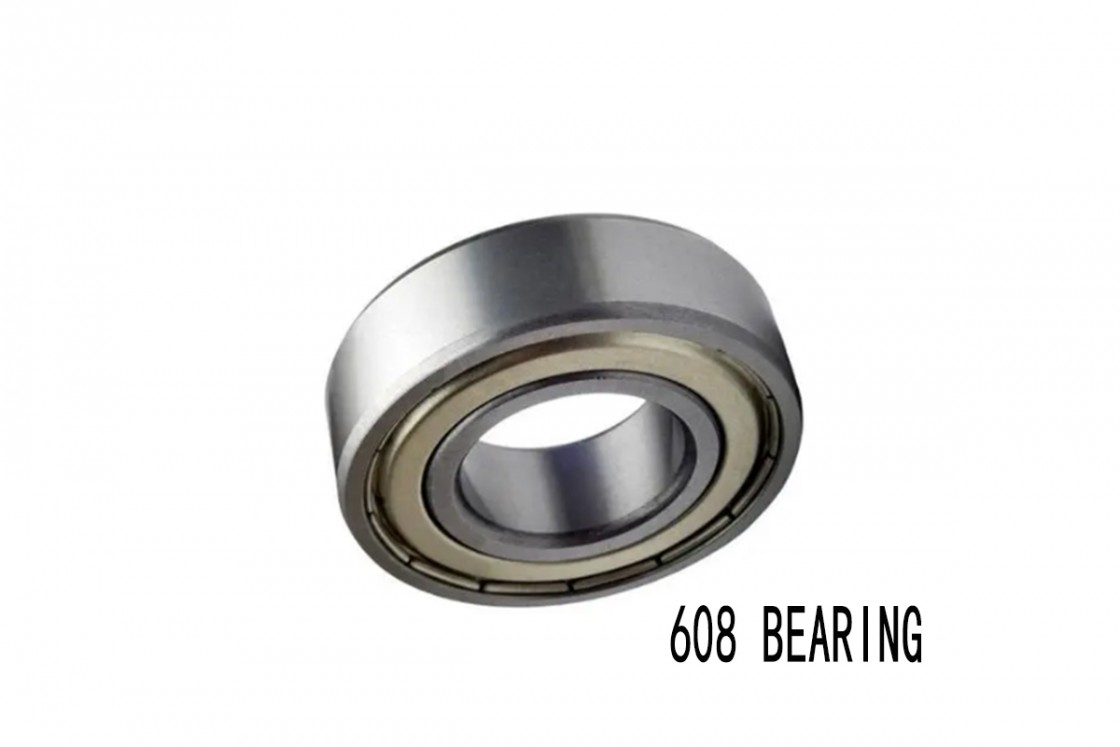
Conclusion
In the realm of engineering, ensuring the longevity and efficiency of 608 bearings is paramount. This conclusion summarizes key practices that enhance bearing performance, emphasizes the importance of proactive maintenance, and offers recommendations for maximizing the effectiveness of 608 bearings in various applications.
Summary of Key Practices for Enhancing 608 Bearing Longevity and Efficiency
To achieve optimal performance and extend the lifespan of 608 bearings, several best practices must be adhered to:
Regular Maintenance: Implementing a consistent maintenance schedule that includes routine inspections and timely lubrication is essential. This proactive approach minimizes the risk of unexpected failures.
Proper Installation: Following correct installation techniques ensures that 608 bearings are adequately aligned and seated, preventing premature wear caused by misalignment or improper fit.
Effective Lubrication: Utilizing the right lubricant and maintaining appropriate lubrication intervals greatly reduces friction and wear, contributing to enhanced bearing efficiency.
Monitoring and Diagnostics: Employing diagnostic techniques such as vibration analysis, thermal imaging, and visual inspections helps identify potential issues early, enabling timely intervention and maintenance.
Final Thoughts on the Importance of Proactive Maintenance
Proactive maintenance is crucial in maintaining the functionality of 608 bearings. By prioritizing regular inspections and utilizing modern monitoring technologies, engineers can anticipate potential failures and address them before they lead to costly downtimes. The investment in proactive measures not only protects the integrity of the bearings but also enhances the overall performance of the machinery they support.
Recommendations for Maximizing Bearing Performance
To maximize the performance of 608 bearings, consider the following recommendations:
Adopt Advanced Technologies: Utilize condition monitoring systems and predictive maintenance tools to ensure continuous assessment of bearing health and performance.
Educate Personnel: Training staff on the importance of proper bearing maintenance and the specific requirements of 608 bearings will foster a culture of reliability and efficiency within the organization.
Utilize Quality Components: Always select high-quality 608 bearings and components that meet the required specifications for the specific application, ensuring compatibility and performance.
Review Operational Conditions: Regularly assess the operational environment and make necessary adjustments to protect 608 bearings from contamination and adverse conditions.
By implementing these practices and recommendations, engineers and technicians can significantly improve the longevity and efficiency of 608 bearings, ultimately contributing to the overall success of their applications. Emphasizing a proactive maintenance approach is key to achieving reliable and efficient operation in any engineering context.
FAQs: Common Questions About 608 Bearings
The 608 bearing is a critical component in various engineering applications, and understanding its characteristics, maintenance, and performance is essential for engineers and technicians. This section addresses common questions related to 608 bearings, providing insights that will help users maximize their efficiency and longevity.
What is a 608 Bearing?
The 608 bearing is a type of deep groove ball bearing commonly used in applications requiring high-speed rotation and low friction. It features an inner diameter of 8 mm, an outer diameter of 22 mm, and a width of 7 mm. This compact size makes it suitable for a variety of applications, including skateboards, electric motors, and robotics.
How Do I Select the Right 608 Bearing for My Application?
When selecting a 608 bearing, consider factors such as load capacity, speed ratings, and environmental conditions. Ensure the bearing can handle the expected loads without exceeding its rated capacity. Additionally, choose a bearing designed for the specific environment, whether it be exposed to dust, moisture, or high temperatures.
What are the Benefits of Proper Lubrication for 608 Bearings?
Proper lubrication is vital for the performance and longevity of 608 bearings. It reduces friction, minimizes wear, and prevents overheating. Using the appropriate type of lubricant and adhering to a regular lubrication schedule can significantly extend the life of the bearing, ensuring optimal functionality in its application.
How Can I Diagnose Issues with My 608 Bearing?
Common indicators of issues with 608 bearings include unusual noises, excessive vibration, or overheating. Implement diagnostic techniques such as visual inspections, vibration analysis, and thermal imaging to identify potential problems early. Regular monitoring can help prevent unexpected failures and ensure timely maintenance.
What Maintenance Practices Should I Follow for 608 Bearings?
To maintain 608 bearings, follow these best practices:
Regular Inspections: Conduct routine visual inspections to check for signs of wear or contamination.
Timely Lubrication: Maintain a consistent lubrication schedule based on operating conditions.
Proper Alignment: Ensure correct installation and alignment to prevent undue stress on the bearing.
Environmental Protection: Protect the bearings from contaminants and harsh conditions using appropriate seals and shields.
What are the Common Causes of Failure in 608 Bearings?
Common causes of failure in 608 bearings include:
Misalignment: Improper installation can lead to uneven load distribution.
Inadequate Lubrication: Insufficient or inappropriate lubrication can result in increased friction and overheating.
Overloading: Exceeding the rated load capacity can lead to premature wear or catastrophic failure.
Contamination: Dirt, dust, and moisture can compromise the integrity of the bearing and lead to early failure.
By understanding these common questions and their answers, engineers and technicians can make informed decisions regarding the selection, maintenance, and troubleshooting of 608 bearings. This knowledge ultimately contributes to improved efficiency and longevity in their applications.
Zhao, L., & Yang, T. (2023). Effects of Material Selection on the Performance of 608 Bearings.
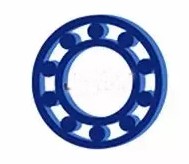

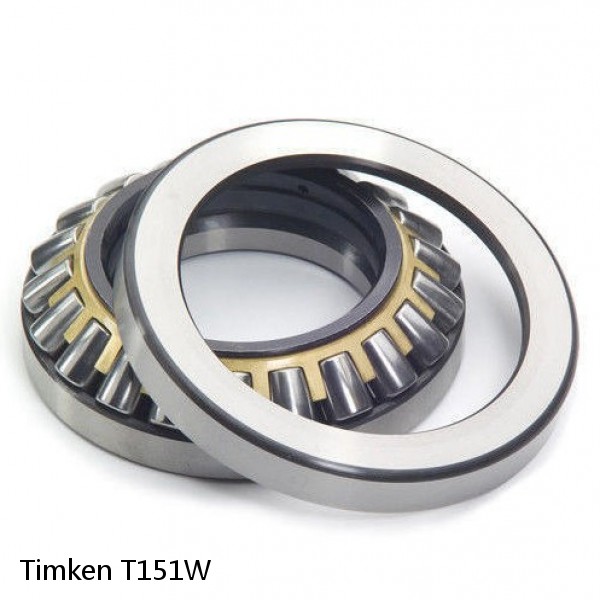 T151W Timken Thrust Roller Bearings
T151W Timken Thrust Roller Bearings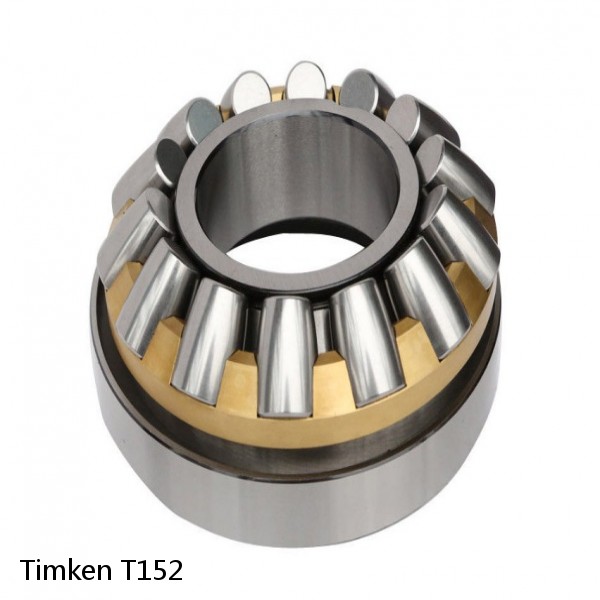 T152 Timken Thrust Roller Bearings
T152 Timken Thrust Roller Bearings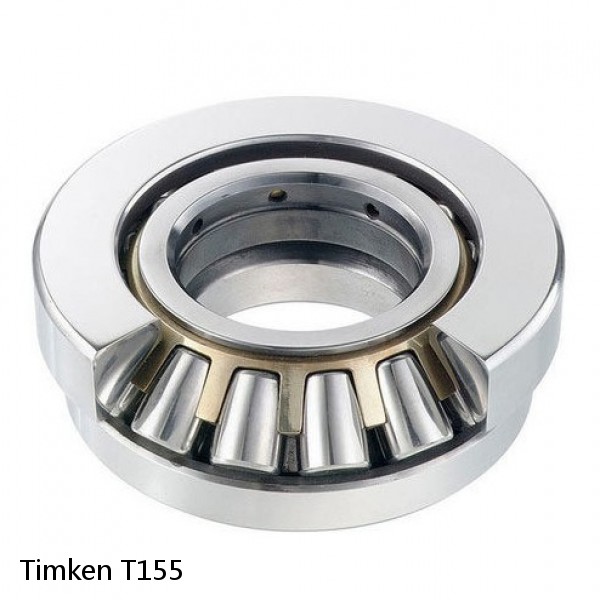 T155 Timken Thrust Roller Bearings
T155 Timken Thrust Roller Bearings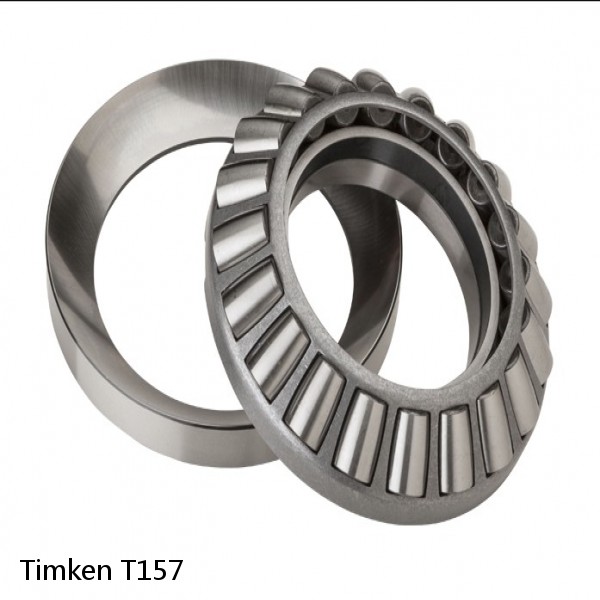 T157 Timken Thrust Roller Bearings
T157 Timken Thrust Roller Bearings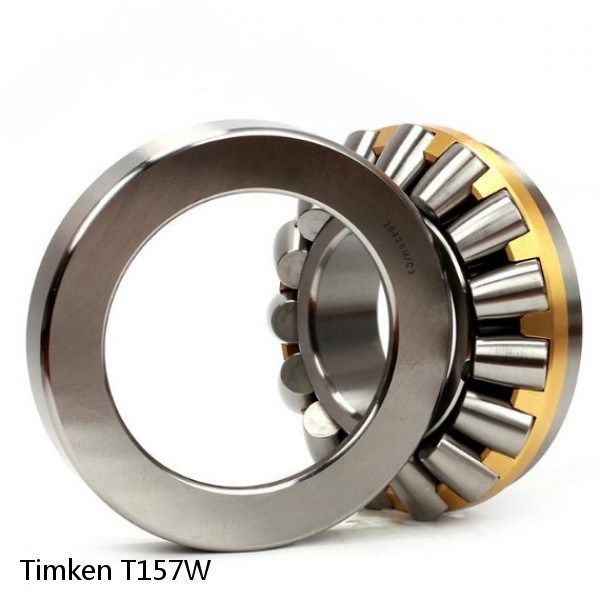 T157W Timken Thrust Roller Bearings
T157W Timken Thrust Roller Bearings